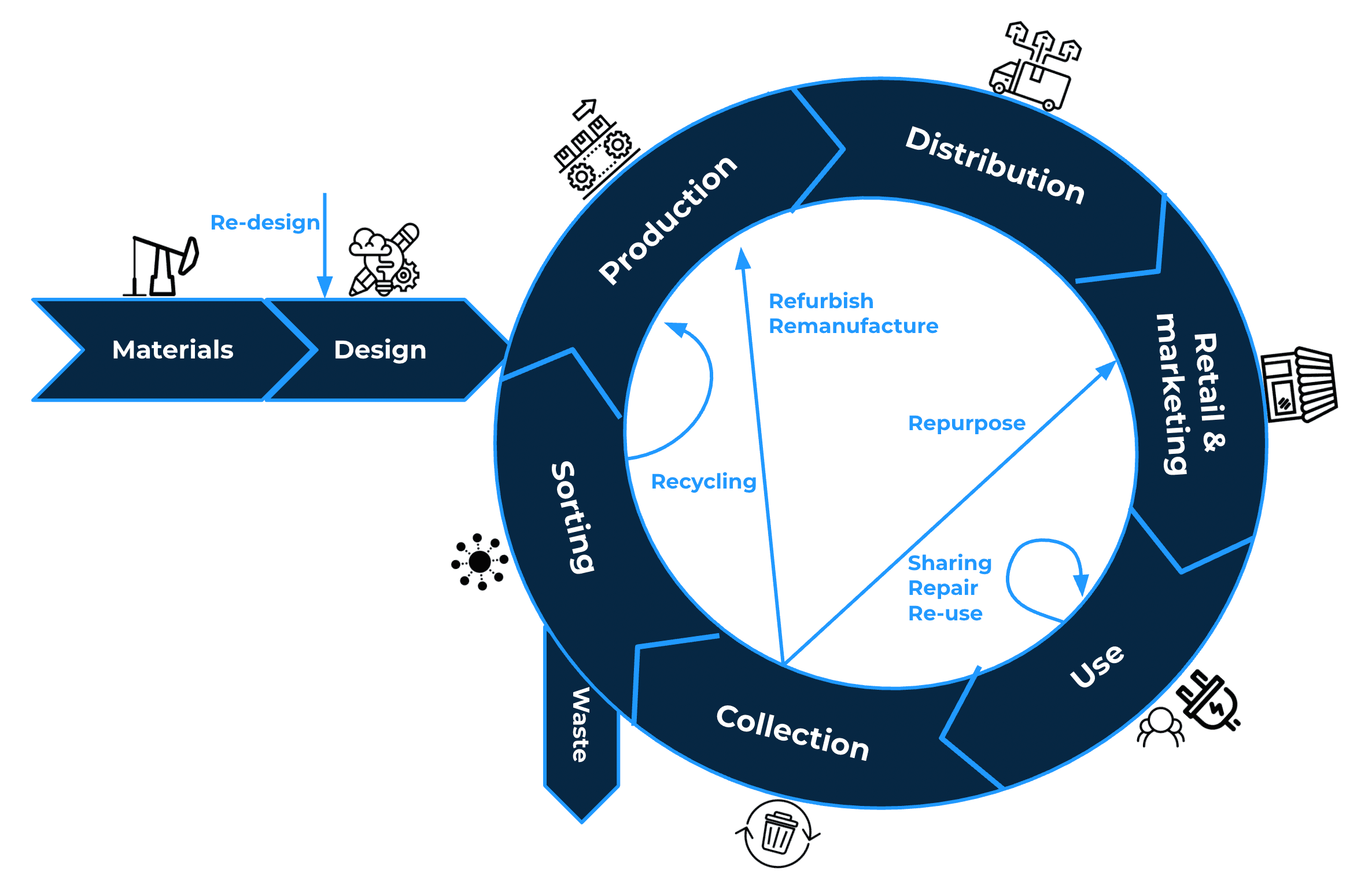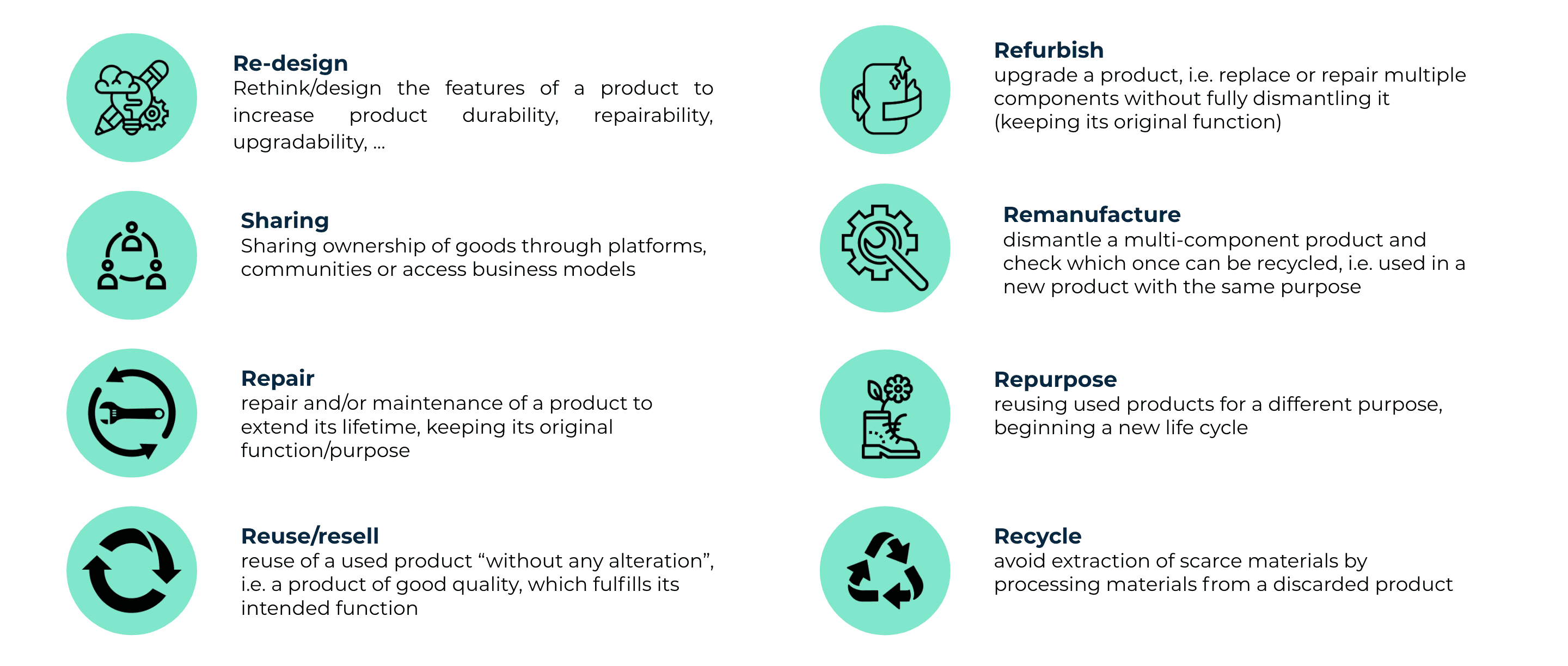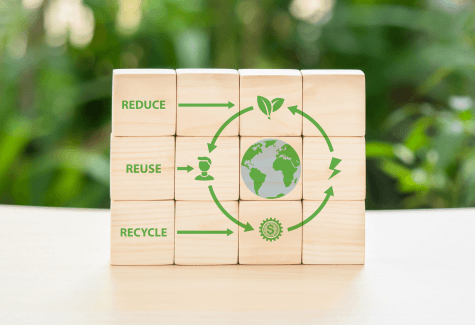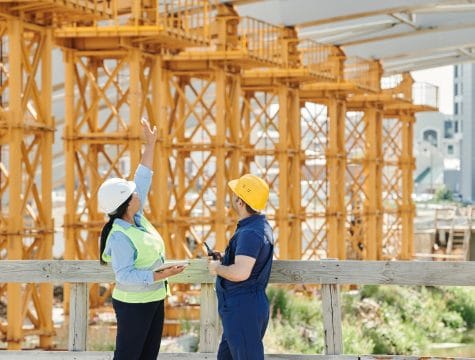With continuous digitalisation, increasing affordability of products and rapid urbanisation, cities produce enormous amounts of electronic waste. Read more about framing the electronics sector here. BSR’s recycling centers separately collect a total of around 4 kg per person per year of old electrical equipment (Source). Berlin looks at the diverse options of the collection of the small IT devices. Other solutions to reduce the pile of electronic waste, like sharing and renting models, are not yet fully there. We wanted to find out what circular actors are present and what initiatives the city needs to boost circularity.
A Circular Value chain for electronics.
A circular value chain closes the loop of material flows. It transforms the traditional linear model by decreasing the need for new material, generating value out of waste streams and using renewable energy. The Circular City Berlin project provides an overview of the required steps for such a value chain (figure 1). Several strategies, such as refurbish and remanufacture, repair and reuse, and of course recycling, are the key actions to enable the value chain (figure 2).
What does the value chain look like in Berlin?
We found around 40 stakeholders that currently contribute to the circularity of the electronics sector in the city (figure 3). This group is very diverse, ranging from platforms renting electronics to university departments researching sustainable production and consumption of electronics.
The value chain steps retail & marketing, collection and use contain a relatively high number of stakeholders. In contrast, less activities of Berlin stakeholders are linked to the value chain steps materials, design, production, sorting and distribution. Historically, Berlin-Brandenburg has been associated with big electrical and electronic companies. Nowadays Berlin has become a centre of consumption with a booming service sector. An example of a service actor is the company Everphone. It offers “Hardware as a Service” and equips the workforce of businesses with smartphones and tablets.
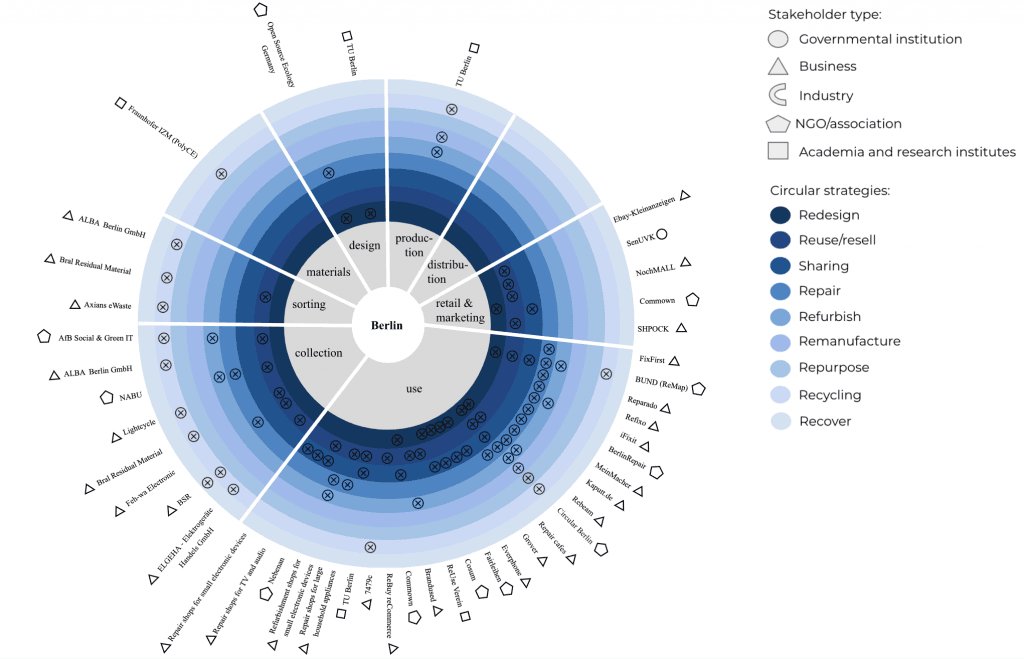
Berlin stakeholders are mainly involved in reuse, repair, sharing, recycle and refurbish strategies. Like Repair Café Brunnenviertel, this place illustrates many repair cafes, scattered around Berlin. Brunnenviertel offers workshops for repairing your own electronics. Volunteers support visitors in a relaxed atmosphere and you can have some coffee and cake while you disassemble your defective device. The aim is to extend the lifetime of products and to pass on valuable technical knowledge from person to person.
If you like this repair café concept, then take a look at the BerlinRepair initiative. This platform supports Berliners that want to start a repair café. It connects people that want to support a location in their neighbourhood. It will be interesting to see how the initiatives involved in repair will align to the European ‘right to repair’. Since the electronics sector will be a priority area for implementing the law.
Contrary to the repair strategy, relatively few initiatives engage in activities that lead to the refuse and reduce, repurposing and remanufacturing of electronics. This is unfortunate especially with regard to the refuse strategy. Refraining from buying products in the first place is a very impactful strategy.
From linear to circular: what the city can do.
If Berlin wants to realise a circular value chain, ideally the city should attract stakeholders engaging in activities of missing value chain steps. For example, actors involved in circular product development and design. The city should also encourage initiatives that implement the underrepresented circular strategies.
However, the presence of little or no stakeholders implies that the infrastructure to facilitate stakeholders or certain circular strategies is not there yet. To boost circularity already in the short-term, it is therefore also key to support existing stakeholders and strategies.
Written by Daantje Berghuis, Elke Burghoorn, Yana Mechielsen, Nola Moreau, Elina Oostendorp.


